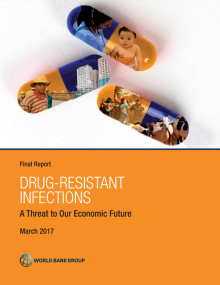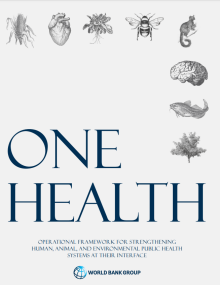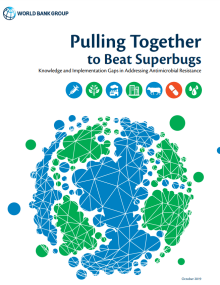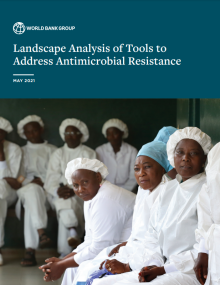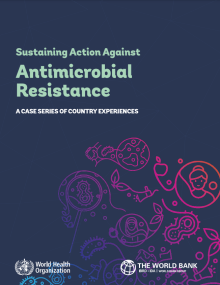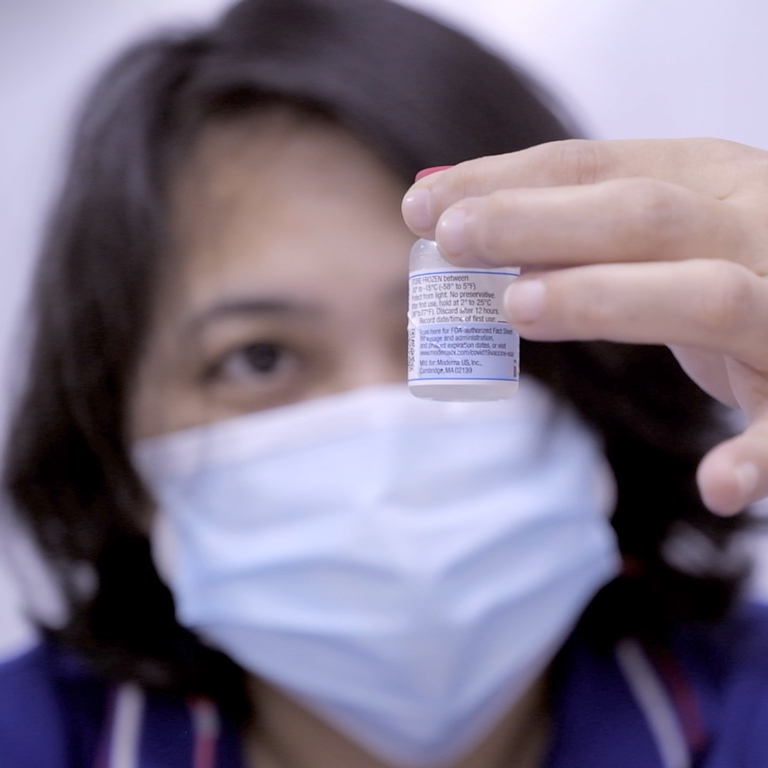Antimicrobials are drugs – such as antibiotics – that kill or control disease-causing microbes. Antimicrobial resistance (AMR) occurs when microbes mutate or adapt in ways that enable them to withstand antimicrobials, rendering treatments ineffective. AMR is dramatically accelerated by the over-use and misuse of antimicrobials, including antibiotics, in people and animals.
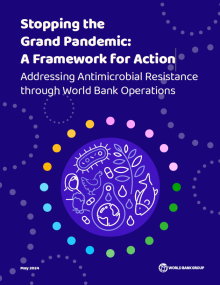 | Stopping the Grand Pandemic: A Framework for Action | 3-pager (PDF) |
We rely on antimicrobials to save lives, bolster the resilience of health systems, protect the sustainability of food systems, and safeguard livelihoods—both people’s ability to work and agricultural economies more broadly.
In 2019, drug-resistant infections were a significant contributor to mortality, with around 5 million people losing their lives due to such infections. Out of these deaths, almost 1.3 million were directly attributable to AMR. The impact of AMR is not limited to human health. In 2017, the World Bank estimated that by 2050, unchecked AMR could wipe away 3.8% of global gross domestic product each year and push 28 million people into poverty.
A recent analysis by the EcoAMR Series projects that if left unaddressed, antibiotic-resistant infections could lead to more than 39 million human deaths between 2025 and 2050. Losses resulting from the impact of drug resistance on livestock could cost global GDP up to $950 billion, while the spread of resistant pathogens from livestock to humans, could cost up to $5.2 trillion.
The world’s poorest people –those living in low- and middle-income countries are disproportionately vulnerable.
AMR also has a significant impact on gender equity and countries’ human capital as it affects people’s lives through loss of time at school or at work and increased healthcare spending. It also affects the ability of health facilities to quickly manage a patient’s health condition. Given the important interconnected role of health, agriculture and food systems, antimicrobials are critical to ensuring that countries can fully realize their human capital and that we can build more equitable societies.
What can be done to address AMR?
AMR is a problem that affects and is driven by interconnected factors related to people, animals, plants, and ecosystems across a range of sectors, including health, agriculture, food, water, sanitation, and the environment. These sectors are all relevant to mitigating the rising tide of AMR. Actors within each of these sectors can take on leadership in addressing AMR recognizing that sustained collaborations between sectors can have an outsized impact. For example, improving sanitation and hygiene through improved infrastructure for clean water in hospital settings can reduce the emergence and spread of disease and reduce the need for antibiotics.
Key intervention areas across sectors:
Health
- Improving infection prevention and control in health care settings
- Improving prescribing practices through guidelines for health care workers
- Conducting public awareness campaigns
- Increasing human health laboratory capacity and access to diagnostics
- Strengthening surveillance of antimicrobial use (AMU) and AMR in human populations
Agriculture and Food
- Increasing oversight of AMU by veterinarians
- Monitoring AMU, surveillance of AMR, and increasing oversight in plant/crop production
- Improving animal husbandry practice and biosecurity
- Monitoring sales and use of antimicrobials and surveillance of AMR in animals
- Promoting behavior change campaigns in animal production
- Increasing veterinary laboratory capacity and access to diagnostics
Water and environment
- Improving infrastructure to provide access to water and sanitation in health care centers
- Implementing effective treatment and disposal of sewage and wastewater
- Improving waste management practices in agricultural and aquaculture production/processing
- Improving safe disposal of unused antimicrobials
- Monitoring presence of antimicrobial residues and antibiotic-resistant bacteria and genes in water and sanitation systems
Multisectoral
- Detecting and deterring substandard and falsified antimicrobials (customs/law enforcement/health/agriculture)
- Improving human and animal nutrition (health/agriculture)
- Expanding vaccination coverage (health/agriculture)
- Using closed water systems in aquaculture (agriculture/environment)
Read more about antimicrobials in the Pandemic Preparedness and One Health sections.
What is the World Bank is doing to address AMR?
Addressing AMR can be highly cost-effective, offering a rate of return on investment of 88 % per year. The World Bank is currently financing 47 projects across 40 countries. These investments are aimed at strengthening and developing agricultural, health and water and sanitations systems, which are critical to preventing the emergency and spread of resistance.
Through its financing and policy dialogue, the World Bank also provides governments with technical assistance and implementation support for AMR-related investments. The World Bank also collaborates with international organizations, development, and country partners to support improved awareness and understanding of critical issues relating to AMR through global advocacy and facilitating knowledge synthesis and sharing.
Examples of World Bank projects tackling AMR:
- Africa CDC Regional Investment Financing Project
- Regional Disease Surveillance Systems Enhancement Project (REDISSE) Phase I to IV
- Regional Sahel Pastoralism Support Project
- Ethiopia Consolidated Water Supply, Sanitation, and Hygiene Account Project (ONE WASH Phase II)
- East Africa Public Health Laboratory Networking Project
- Strengthening Pandemic Preparedness in the Eastern, Central and Southern Africa Health Community Project
- Papua New Guinea Emergency Tuberculosis Project
- Additional Financing for Second Serbia Health Project
- AFR RI-Southern Africa Tuberculosis and Health Systems Support Project
Last Updated: Sep 27, 2024
